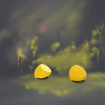Search the Community
Showing results for tags 'instructions'.
Found 253 results
-

[MOC] DUNE Display Stand for Lego Atreides Royal Ornithopter
recklessGlitch posted a topic in LEGO Licensed
Display Stand for the LEGO Atreides Royal Ornithopter I usually publish RC - MOC instructions on Rebrickable. Some weeks ago I asked people on rebrickable, what kind of RC conversion they would prefer for the Ornithopter. During that I showed a quick Rendering of a Base for the Thopter. The folks on Rebrickable liked it so much, that I developed a prototype and published BUILDING INSTRUCTIONS Features Ornithopter can be displayed parked (wings folded and landing gear extracted) or flying (wings unfolded, landing gear retracted transparent support contains locking mechanism (optional) for safety but it only takes seconds to unlock and remove the Ornithopter no special modification of the Ornithopter needed desert is mostly tiles, has 2 dunes and a studded area for placement of mini-figures bricks are fairly cheap and widely available most bricks are tan or dark bluish gray, so they can be re-used easily Part prices A lot of people over on rebrickable seem not to care about part prices and availability. I do! You should be able to buy the bricks and a display should not cost as much as the set. Ornithopter color correction - free instructions And since I am on it: I made free instructions (see my MOC) to swap all those red, yellow and orange bricks on the ornithopter into black and gray. And if you want to help me, tell me How you would prefer a motorization (RC MOD): OPTION-A: Internal Motor, just driving the wings (maybe! the landing gear too) Most likely Power Functions (no extendions for Powered Up) battery box external (any) or in the cockpit (buwizz or china-remote) OPTION-B: External Motor inside a Base, driving the wings and also making the ornithopter start and land and also controling the landing gear (Yes, a single motor could do that, I have an idea) OPTION C: Multiple external motors driving the wings, landing gear and moving the ornithopter like it's hovering while flying-
- display
- instructions
-
(and 4 more)
Tagged with:
-
Well, hello there! There’s a story behind every Lego build so, please indulge me, and let me tell you ours…. It’s a beautiful seriously wet night here in Australia where I find myself gazing riveted to my computer, with Studio 2.0 open, marvelling at the final depiction of what represents a year’s work between an odd coalition of adult Lego lads. Hovering virtually on the screen in all its three-dimensional splendour is the cumulation of our little brains trust, our version of Henrik Anderson’s 75355 Ultimate Collector’s Series X-Wing Starfighter. Somewhere in Sweden though is the real thing. Our prototype. It sits solidly & gracefully in a professional photographer’s home reportedly receiving the lens love it deserves from his deft touch and eye. More importantly, he’s our team’s test builder, coder and (for all intents and purposes) Lego ‘Sugar Daddy’. I say this with both the full respect and appreciation as a man who barely had to fund this project even a few cents or break any Lego lift arm pieces along the way. For that we can thank this professional photographer. A determined dreamer who both initiated and pushed this venture forward with a maximum amount of swear words in toe and a minimum amount of doubt in hand! And, he’s probably had to fork out enough cash to almost build three different variants of UCS X-Wings along the way! Thanks ‘rde’ you’re a champ! But wait! There’s also a chap quietly celebrating somewhere in Greece. He’s just finished an instruction manual for our build in addition to overseeing the first print run of its sticker sheet. Now, when I say ‘quietly celebrating’ I mean instead rather ‘loudly’ with that measured quality you can sense in someone that betrays the fact that they tend to generally know what they’re doing, why they’re doing it and just how to get it done at the same time. This speaks volumes! He also flies helicopters for a living so you’d hope he’d have all those qualities in abundance otherwise your life insurance premiums would be through the roof! He’s also ‘The Fixer’ and goes by the handle ‘Rilted’. That trickster that finds a solution just when all seems so dark, and your floor is dangerously strewn everywhere with a minefield of Lego pieces that obstructs your path to the bathroom you now so urgently need to use. He’ll find you a safe way there and faster than your bladder can say “Too late!” And then there’s old Aussie me, ‘Aeroeza’. The VFX guy with a penchant for accuracy and tendency to see the tree for the wood and sometimes the wood for a forest full of hungry arborists looking for lunch. I’ll make a meal out of anything ILM jerry-rigged in 1976 and try to build the equivalent in polygons and Lego form however structurally unsound and physically unsafe. That’s a great place to start when you know your ‘back ups’ can both build and fix it no matter the price and broken piece count. Together we formed an international brood of Lego devotees nominally referred to as ‘Gentlemen of the Brick’ a.k.a. GotB. A name mostly chosen because ‘League of Gentlemen’ was already gratefully taken, and ‘League of Extraordinary Gentlemen’, although a good graphic novel is still mostly remembered as just a bad film. Introductions aside, behold our first project! GotB’s UCS X-Wing Starfighter! 75335 Original vs 75355MOD-GotB (excl. minifigs): 1949pcs vs. 2699 pcs 1.80kgs vs. 2.0 kgs 563x443x118mm vs 576x495x112mm (without stand) Well, that’s only a photo of the previous old prototype. The one that worked really well and then we made better…. Turns out ‘rde’ is also a busy responsible dad (not just the ‘sugar’ type) so I can only assume photos of said final prototype promised in my preamble above have been slightly delayed... So instead have a sexy render of the final model! We’ll update with new shots soon…. Is it a MOD or MOC? Hard to say but we think it deserves centre place on your coffee table! Certainly, its external appearance owes much to Henrik Anderson’s original but that was always the point! We didn’t want to reinvent the wheel so much as make it spin faster, have juicer suspension, and enough tyre tread for urban assault expeditions. At the same time though, we wanted our X-Wing to look at home sitting alongside its UCS cousins while honoring the original set and Lego artist that inspired it in the first place. Admittedly there were a few concerns for 75355 out there amongst Adult Fans of Lego that also inspired and galvanized us into getting this project off the ground. Chiefly amongst those was the set being a little too flimsy and somewhat fragile. There were also those who felt its accuracy lacking or even unsettling in critical ways. The nose cone was clearly very stubby for a vehicle inspired by a 70’s dragster car and the front section’s side profile was rendered a bit clumsily using stepped plates that were in dire need of streamlining. The engine intake cowlings also appeared either too big or too small depending on whether you thought the wings were long enough or just too short. The same could be said about the R2’s minifigure scale. And the general greebling, when compared to many other recent UCS models, was also often deemed more ‘creative’ in execution rather than intentionally ‘accurate’. In truth we think Henrik got so much right and with a ton of tricks and wizardry on display for us to enjoy along the way. Where 2012’s 10240 UCS Red Five X-Wing Starfighter had seemed focused on improving choices made for 2000’s 7191 UCS X-Wing Fighter, 75355 proved a radical departure altogether in techniques and design sophistication. It bristles with effective ideas made real for a commercial product and clearly pushed ‘The Bricks’ boundaries further than had been commercially possible before. We really do like it! But it did depart from 10240 in one critical way… The S-Foil. 75355 has a rather snappy, dramatic action when deploying the wings. This is a novel approach and fun alternative to the slow thumbscrew-like turning mechanism the older UCS versions promoted. However, this S-Foil system is perhaps a bit too clever as the action comes at the cost of a more stable platform 10240 generated with its lift arm design. We felt our version needed to restore this lost stability. Which leads me to highlight the heart of our build under all those external similarities. This is a feature very different in approach to the official set but harkens back to the solutions of old. An S-Foil system whose conceptual genesis lies in the form of a MOC designed by an American named…. well for the sake of privacy let’s stick to his Reddit username of Hypodorious. This nifty little 40-tooth gear and worm screw mechanism promised to address some of the concerns regarding 75355 out there. We managed to make it a little more compact, move past its chain link driven mechanism and install cogs for the use of a dependable rear ‘thumbscrew’ to deploy the wings. The result proved a robust and reliable one that was still able to split open to a screen accurate 36-degrees or close without leaving a gap. This proved only the beginning of our journey though… We were also able to expand the internal space found in the engine bays, enough to accommodate two 31mm technic wheels. These directly link the lift arms of the S-Foil through a variety of pins and axels to the technic bricks and plates of the wings, simultaneously providing both stability and a degree of accurate detailing to an area of the build that the official UCS X-Wing’s have consistently overlooked. The wings themselves can droop ever so slightly toward their tip but this is not noticeable when they are in ‘attack position’. When deployed the S-Foil appears a pretty gravity defying construction that closely matches the external appearance of the hero model X-Wing Fighters from Star Wars Episode IV: A New Hope. Our wings have been lengthened by three studs to better match the source material as too the rear of the fuselage by one stud. The lasers have also been corrected. Schematics from the book ‘Star Wars: Rebel Starfighters: Owner’s Manuel Workshop’ were referenced to get these dimensions as close as Lego bricks could get us. It turns out that the width of the engine intakes Henrik designed are perfect when compared to these schematics but, his wings being a bit undersized, confused these proportions. Our new wings resolve this characteristic. Another area we wanted to nail down was the forward section of the model. Getting the front fuselage’s top and side panels to be smooth, angled and gap free has been successfully implemented by several MODs out there and ours is no exception! But it was the front nose cone that really needed to be right. The solution we found took many iterations and additional research to refine but we believe it to be a nose cone worthy of any true 70’s dragster! We had a lot of fun with the rear fuselage’s top panel. The vertically oriented technic 6 x 8 technic bricks with open centre, that provides a framework for our S-Foil system, allowed too for a degree of height differential when mounting the details of the top fuselage panel, making for some subtle ‘greebling’ accuracy to play out. The rear fuselage side panels have also been completely redesigned and are pretty robust. The back panel has similarities to 75355 and the ‘thumbscrew’ integrates nicely here, passing for greebling that is also found on the screen model, just like 7191 and 10240 does. Which brings us to the cockpit. We’ve done our best to scale its details correctly and to utilize every millimetre of space. Control surfaces were incorporated into the side panels of the cockpit and unsightly gaps found in the forward avionics area closed. We even designed additional stickers for placement on these consoles that wonderfully match the style of the official UCS set’s decals. The rear avionics of the cockpit also went through many iterations. In the end it was decided to incorporate a couple of play features at the expanse of a little accuracy. The targeting computer has been kept and can swivel, retract, and angle into a stored position while allowing the canopy to still close. For further information regarding our instructions, parts list and sticker sheet please visit out site… https://jedi.se/ May all our UCS X-Wing dreams come true! Cheers all, Aeroeza, rde and Rilted – GotB May 4th 2024 P.S. More images to follow & Happy May Fourth!!
-
Here we are! My very first UCS-style model is finally out, and it's a big one: the mighty Acclamator-class assault ship from Episode II: Attack of the Clones. Made of 5,152 pieces, at 72cm (28,4′′) in length, weighing 3,2kg, it's by far my biggest project to date. This 100% SNOT build was painstakingly modeled to accurate reference material, from exact profile dimensions to surface detail on top and underneath. The underside was also full of geomertic challenges due to its numerous angles and shapes. I wanted to include essential functionality like detachable landing gear for landed display, and openable hangar doors with boarding ramps that slide down to reach the ground. The ship also features a removable stand, as well as a hidden handle to make switching display modes easier. In addition to the "standard" version with Republic markings, I also made a "class-II", all-gray version, which comes with its own instructions and parts list. The Acclamator is technically one of my oldest projects: the initial version of the design was made right after the Torment in 2021, but I eventually shelved it as I wasn't truly satisfied with it. Since then I had so many requests for this ship that the idea of making a new version progressively grew on me, until I took the plunge in late January 2024. Starting the new design from scratch, I decided to scale it exactly to Martin Latta's fantastic UCCS (Ultimate Collector Series) Venator, which happens to be in ~1/1000 scale. So I hope my Acclamator will, along with Latta's Venator, form the basis of a bigger 1/1000 scale BrickVault Republic fleet in the future! ► Instructions for the Acclamator are available at BrickVault! More pictures on my Flickr page.
- 11 replies
-
- lego
- acclamator
- (and 12 more)
-

[MOC] 42154 Dodge Viper GTS (1996) - alternate build
Timorzelorzworz posted a topic in LEGO Technic, Mindstorms, Model Team and Scale Modeling
Hello Eurobrickers, let me allow to share a new creation with some insights made from LEGO Technic set 42154 Ford GT as an alternate build. The idea behind When the 42154 Ford GT came out with its inventory in March 2023, I was impressed by the earth blue colour and had immediately a Lamborghini Lanzador in mind to build with this pieces. I was sure that this model is doable with the given parts, but unfortunately this vehicle is an upcoming electronic car with no engine. Skip the engine and functionality only for design? Nope, not this time so I decided not to make this model and was working on some sketches for a Koenigsegg Gemera instead but that car did not convinced me at all so I decided to finally skip (pause) 42154. To be honest, I found the inventory of the set very special with many odd part numbers, but was impressed by the large amount of connectors used and blue axle pins and also red 2L axles. In February 2024, I stumbled over pictures of the Dodge Viper GTS in second generation, manufactured since 1996 and directly felt in love with this car. To reuse the headlight parts and white parts for stripes seems to be a good option and I finally got keen with the inventory of the 42154 set to make first sketches. In the beginning of March 2024, the project for the Dodge Viper was official born and the finished model ends up with impressive 1430 parts used only from the set 42154 Ford GT. Model features 1:11 scale HoG linkage-steering suspension in front and back engine with moving pistons openable doors on both sides realistic openable hood with lock detailed interior measures 41cm x 18cm x 11.5cm Model impressions Model details Both doors of the model can be opened to see the interior. Pedals are made for the driver with existing parts. The car is controlled from the back with a knob that is responsible for steering the front wheels with a linkage system. The hood opens up to 60 degrees and can be locked to safely stay in position while playing and displaying the model... ...and easily unlocked to close. Opening the hood reveals the engine that is driven directly by the rear wheels through differential. As common for B-model compromises and limited parts, this Dodge Viper uses (only) a V6-engine under the hood instead a V10 - sorry folks. It was very hard to fit all the functionality (engine + steering + suspension) under the hood in tiny space, but everything works well as suspected. Made with DieCast For the first time I used a Diecast-model and also many pictures from it. Here are some pictures for comparison: If you like what you see, feel free to support my work and to build your own Dodge Viper from your 42154 donor set. Instructions and more info can be found here Happy building! -
If you have followed my WIP Post, you will already have the gist of it. I have finally managed to iron out any issues with my Stud.io design and create the instructions. Basically, I have tried to do the following things: Design a completely new tail section. Replace any offensive colours. Design new panels with less studs. Make the overall shape more like the movie Thopter. You can judge for yourself if I succeeded. Instructions and Part List are available here: https://reb.li/m/179131 Here are some more renderings: And some pictures of my prototype (there are some minor differences compared to the final design):
-
Introducing you to my latest Midi-Scale spaceship, the timeless Y-Wing from Episode IV - A New Hope! At 546 pieces, this compact and intricate model is barely wider than your average smartphone's height, but keeps a dense, detailed look and accurate proportions. I initially made a first prototype more than a year ago but was unhappy with the half-baked, almost playset-ish scale. I took on the challenge again and recreated it entirely from scratch: it's now smaller, more accurate, and just better in every aspect. Despite the small size, I did my best to capture the essence of the original ILM prop: tilted cockpit section, engines off-center relative to the thin support struts, asymmetrical greebles from top to bottom, cockpit turret... Believe it or not, the deceptively simple shape of the body was not easy to capture at this scale: with such a tiny surface to work with, a subtle balance had to be struck between incorporating complex greebling and "drawing" an accurate body outline. The cockpit section was a whole other beast, but once I figured out how to create the tapering, things clicked pretty fast. I managed to reproduce the slight downwards tilt, the yellow stripes on the fuselage, and the more discreet gray stripes on each side as well. I believe it's about as small as you can go when creating a Y-Wing cockpit without sacrificing crucial features and proportions! This model comes with a removable stand. Although it being purely a display piece, its swooshability is very good. In addition to being cost-effective, I think it makes a nice desk model for anyone loving that ILM prop look, with a small space footprint. ► Instructions for the Y-Wing are available at BrickVault! More pictures on my Flickr page.
-
My first ever true Minifig-scale ship is finally here, and what better model to start with than the sleek BTL-B Y-Wing from The Clone Wars series. Being 23 meters long in universe, this accurately Minifig-scaled MOC is quite a unit: 57 cm long, 1,6 kg, 2,954 pieces. It can accommodate two clone pilots - one in the cockpit, the other in the turret. The model is available in three versions: classic (yellow), Rex's (blue), and red. With a spaceship of this kind, the main challenge is to achieve a level of smoothness and fluidity that gets as close to the original as possible. Using the Battlefront II model as a reference, my goal here was to closely match all key features of the ship: the subtle downwards angle on each side of the body, the curvy and tapered front section, the continuous yellow stripes that run across the entire fuselage, the intricate middle-section... and for such a smooth ship, going full SNOT (from top to bottom!) goes without saying. The T-shaped body of Y-Wings usually allow for simplistic structures, but in this case, figuring out the internals was one of the truly head-scratching parts of the build, since I had to properly incorporate angled fuselage assemblies and make a proper interior for Minifigs. Even so, the model is very swhooshable and can be grabbed from the underside, from the rear or even from both wings. Each color variant is accompanied by its specific set of instructions and parts list, giving you the freedom to build the one you prefer. The ship has two display modes, "in-flight" with its fully removable stand, and "landed" with retractable and easy-to-connect landing gear. The swooshing can begin. ► Instructions for the BTL-B Y-Wing are available at BrickVault! More pictures on my Flickr page.
- 10 replies
-
- minifig scale
- minifig
- (and 21 more)
-
Lego Technic 2 x 42132 Alternative Model - Mahawk Buggy (Building Instructions) This is alternative model for Lego Technic 2 x 42132 Motorcycle (you need to have two sets). This robust buggy with aggressive view is made for aggressive terrain, as well "aggressive" child play. It has detailed interior with that thing which allows you to control direction of the movement, but without that stick which helps you go faster or slower. Also, it has kind of sit for driver, which might be not recognizable from first glance. The model has next Technic functions: rotation of all four wheels in both directions! Overall, those functions give capability to move these models with enormous speed in lego world! This robust model has passed many children quality tests and proved they great playability. If you interested in building this advanced model by yourself, you can get building instructions download links in description when you click on pictures or video, or below the images (if they will not be deleted by admins :-) ). Images: Lego Technic Set 42132 x 2 Alternative Model - Mahawk Buggy (Link to Building Instructions in the description) Lego Technic Set 42132 x 2 - Mahawk Buggy (Link to Building Instructions in the description) Direct Download link for Technic Building Instructions: https://play.google.com/store/apps/details?id=max.technic.building.instructions
- 4 replies
-
- lego technic
- lego
-
(and 6 more)
Tagged with:
-

Simple Off-Roader + Instructions
Zerobricks posted a topic in LEGO Technic, Mindstorms, Model Team and Scale Modeling
Many people have been asking me for a simple, easy-to build and most importantly cheap Off-Roader. When I started this project, I've set myself the following guidelines: Use a single BuWizz 3.0 and "only" 2 BuWIzz drive motors Implement a 2 speed gearbox Maximize the ground clearance by using a pendular axle (this way the independent suspension doesn't have to loose ground clearance when going over obstacles) The model has to be built from under 500 parts All the parts have to be standard and in current production Keep the number of different parts as low as possible Use color coding to simplify the building process Design the model so that it can easily be modified by other builders Create proper building instructions And this is what I came up with in the end: I managed to successfully realize the all the planned functionality, features and more: All wheel drive 2 speed gearbox Pendular front axle Independent suspension on all wheels Openable doors for easy acces to the charging port Interior with seats and a steering wheel The dimensions and specs are as following: Built out of ~460 parts 27 x 20 x 13 cm ~ 850 grams Top speed of 7 km/h As usual there's a video showcasing the model in more detail: But just building the model and recording the video was only half the story. I also taught myself how to create the building instructions using the Studio which can be found here: https://bricksafe.com/pages/Zblj/simple-off-roader Since these are my first such instructions, they may not be ideal... So in a case of any issues, confustion, or such I also uploaded the .IO and .LXF files which can be found in the corresponding Bricksafe folder: https://bricksafe.com/pages/Zblj/simple-off-roader All in all this was a great learning experience, I'm always happy to learn a new skill and being able to create my own instructions sure is a good skill to have as a LEGO builder. To conclude; using this as a base, I wonder what kind of tweaks, improvements and crazy mods other builders will come up with!- 17 replies
-
- instructions
- buwizz
-
(and 5 more)
Tagged with:
-
Lego Technic 42137 Alternative Model - Pull Back Buggy (Free Building Instructions) This is alternative model for Lego Technic 42137 Formula E - Porsche 99X Electric. This robust pull back buggy is made for aggressive terrain, as well "aggressive" child play. It has detailed interior with that thing which allows you to control direction of the movement, and that stick which helps you go faster or slower. Also, it has comfortable sits for driver and that man who is holding the map and saying left, right, left. etc. The model has next Technic functions: pull back engine connected with rear wheels Overall, those functions give capability to move these models with enormous speed in lego world WITHOUT YOUR INVOLVMENT! This robust model has passed many children quality tests and proved they great playability. If you interested in building this advanced model by yourself, you can get building instructions download links in description when you click on pictures or video, or below the images (if they will not be deleted by admins :-) ). Images: Lego Technic 42137 Alternative Model - Pull Back Buggy (Free Building Instructions in description) Lego Technic 42137 Alternative Model - Pull Back Buggy (Free Building Instructions in description) Lego Technic 42137 Alternative Model - Pull Back Buggy (Free Building Instructions in description) Lego Technic 42137 Alternative Model - Pull Back Buggy (Free Building Instructions in description) Direct Free Download link for Building Instructions: https://play.google.com/store/apps/details?id=max.building.instructions
-
"Commander Cody, prepare the gunships for ground assault!" Let's give the Midi-Scale treatment to another timeless ship: the LAAT Gunship or Republic Gunship from The Clone Wars. Being a fan of the sleek and flush Clone Wars era design, I thought this variant deserved more attention, especially in Midi-Scale. This Midi LAAT/i consists of 1,015 pieces, measures only 22cm (without guns), and is accurately Microfig-scaled. It features a fully SNOT look, openable front doors, and a removable stand that can be tilted to taste. Design-wise, this ship was full of challenges, with lots of subtle angles and curved surfaces everywhere. Shaping the front section wasn't an easy task at this scale, as well as adding that crucial touch of lime green without any stickers. All of this resulted in a pretty intricate structure, especially for the front section. The angled rear section of the body features other details such as missile belts, exhaust slats and tail cannon. The underside of the ship is also fully SNOT-built. Initially, all four doors could be opened, but I chose to remove the less useful rear door mechanism for a smoother, easier building process. ► Instructions for the LAAT are available at BrickVault! More pictures on my Flickr page.
- 8 replies
-
- midiscale
- midi-scale
- (and 13 more)
-

[MOC] Lego Technic Fishing Boat
makushima posted a topic in LEGO Technic, Mindstorms, Model Team and Scale Modeling
MOC Lego Technic Fishing Boat Building Instructions: removed until a proper presentation is made Lego Technic MOC - Fishing Boat (Building Instructions) Lego Technic MOC - Fishing Boat (Building Instructions) Lego Technic MOC - Fishing Boat (Building Instructions) Lego Technic MOC - Fishing Boat (Building Instructions) Lego Technic MOC - Fishing Boat (Building Instructions) Lego Technic MOC - Fishing Boat (Building Instructions)- 16 replies
-

[MOC] Lego Technic Military Truck (Building Instructions)
makushima posted a topic in LEGO Technic, Mindstorms, Model Team and Scale Modeling
MOC Lego Technic Military Truck Building Instructions: https://play.google.com/store/apps/details?id=max.technic.building.instructions Lego Technic MOC - Military Truck (Building Instructions) Lego Technic MOC - Military Truck (Building Instructions)- 2 replies
-
- building instructions
- instructions
-
(and 5 more)
Tagged with:
-
Wasn`t sure if i had to post this on the old thread or to make a new one, but I decided to be safe. Anyway, I recreated Jantayg`s buggy made for the BuWizz 2018 ”Fast car competition”, but, being a recreation not a copy, differs in some manners, such as the way the front frame is attached to the main chassis. This MOC has 1x buggy motor and 1x servo-motor, pneumatic shock absorbers, a good suspension travel and a space more than enough for the battery/ electronics but sticks to around 700g with 1x battery. You can find the digital construction file and the part lists for the other paint-jobs on Rebrickable Thanks to the original creator that accepted this recreation to be made public!
- 19 replies
-
- technic
- instructions
-
(and 3 more)
Tagged with:
-

42126 Alternate Build 1970 Dodge Charger "Off-Road"
CrazyKreations posted a topic in LEGO Technic, Mindstorms, Model Team and Scale Modeling
Hey everyone, CrazyKreations here. We are proud to present to you all our new alternate builds using the Lego set 42126, the Ford F-150 Raptor. This would be the 5th alternate build model that we have designed from the Ford Raptor! As always this model has a variety of features and detailed instructions on how to build this model. This model is a 1970 Dodge Charger and was inspired by Dom's Offroad Charger from the Fast and Furious 7 movie. The movie car featured an offroad modification of the traditional Dodge Charger for an offroad scene in the movie. We were inspired by this car and decided to remodel it using only the 42126 Ford F-150 Raptor's parts. Some Photos of the model: Features: Although this model is intended for display, it features some sturdy features that increase playability. This model has the following features: Front and Rear Suspension Independent and Solid axle suspension Steering via HOG Detailed + Working Flat 6 Engine Detailed Interior 2x Spare wheels (I used different spare wheels in the video as the Raptor only comes with 4 wheels) This model was intended to be modelled after Dom's 1970 Dodge Charger from Fast and Furious 7. If anyone has any concerns about the model please feel free to send us a message on rebrickable via Private Messaging or contact us on our website using this https://www.crazykreations.com.au/support-
- fast and furious 7
- lego technic
- (and 7 more)
-
Hello Lego-Whovians! I've started watching the classic Who episodes and decided to design new Brickheadz figure for each new Doctor I encounter. So, here are the William Hartnell's First and Patrick Troughton's Second Doctors in this cute cubical form. The final design was achieved through a dozen of prototypes with a help of a really useful Stud.io program Here are the early prototypes of the figures. You may easily spot the changes I've made later. The First Doctor Made in B&W (and shade of grey) as TV shows back then were not so colorful as nowadays. He has his walking stick, scarf and hat for the Tenth Planet. Numerous slopes are used to show his flowing white hair. One of the hardest part was making his checkered pants. Figure also has rounded cheeks to make his face less standart. The Second Doctor Also in Black&White. Has hes flute-recorder, bowtie and a handkerchief in a pocket. You may notice that I had to use the old dark grey to make his striped pants. Quarter-round tiles are used to make his angry browa for a more recognizable face. As the models were made in Stud.io, I've made instructions for them too, links are here if you need them: https://rebrickable.com/mocs/MOC-137690/CogInTheMachine/brickheadz-first-doctor-william-hartnell/#details https://rebrickable.com/mocs/MOC-142487/CogInTheMachine/brickheadz-second-doctor-patrick-troughton/#details
- 3 replies
-
- brickheadz
- instructions
-
(and 6 more)
Tagged with:
-

[Intructions available] Ferrari F40 1:10 (V2)
sebulba56 posted a topic in LEGO Technic, Mindstorms, Model Team and Scale Modeling
Link to the instructions : https://rebrickable.com/mocs/MOC-144042/Sebulba56/ferrari-f40-supercar-110-scale/#details Here is my latest creation, a 1:10 scale replica of the iconic Ferrari F40. This project was a true labour of patience, and I am proud to say that I was able to incorporate all the functions that make a supercar and to capture the essence of the design of the F40. I already worked on the F40 and posted it almost 2 years ago (link right below). It was a cool model but I still had always that feeling that I could do better. This feeling was emphasized by the other people of this forum that worked on this Ferrari like @lnteknik or very recently @Lox Lego. So I went back to my pieces and started to work from scratch on a new iteration of this legendary car. To sum up : I changed almost everything. One of the key features of the Lego model is the functional 5+R gearbox, which allows the car to shift through its gears just like the real-life F40. This was a particularly challenging feature to implement, but it really adds to the overall playability of the Lego model. The gearbox is designed to be smooth and efficient, making it easy to shift between gears and control the fake engine’s speed. The gearbox was inspired by GrayGear from Eurobrick, here is a link to his topic : His gearbox is a 6 speed, I worked on it to implement a reverse gear. Note that I reproduced the particular patern of the F40, the R replace the 1, the 1 replace the 2 and so on. In addition to the gearbox, I also included a functional opening mechanism for the doors, front trunk, and rear engine hood. This was a challenging aspect to incorporate into the design, but I am thrilled with how well it turned out. Users can easily open and close these components, further enhancing the interactive and realistic nature of the Lego model. Those components can also be retired to reveal the chassis of the car in a modular-ish way. Attention to detail was also a top priority for me during the design process. I made sure to include accurate design elements such as the air intake on the doors and the sharp, angular lines of the car's bodywork. I also ensured that the proportions of the model were as true-to-life as possible, making it instantly recognizable as an F40 to car enthusiasts and Lego fans alike. I am also extremely pleased with how the engine and its details turned out in the model. The attention to detail and accuracy of the design truly showcases the iconic engine of this legendary car. Furthermore, I the steering mechanism can be controlled by the steering wheel or by a removable HOG, which adds to the overall control of the Lego model. The steering is designed to be responsive and smooth, allowing to easily maneuver the car in any direction. Finally, I included the iconic pop-up headlights, which can be activated using a small wheel in the dashboard. This adds a fun and interactive aspect to the model, and further enhances the overall attention to detail that went into the design. Overall, I am extremely proud of this creation, and I believe that the inclusion of these unique and functional features truly sets it apart from other Lego Technic models. The attention to detail, accurate design elements, and functional components make this model a true tribute to the iconic Ferrari F40. Link to the instructions : https://rebrickable.com/mocs/MOC-144042/Sebulba56/ferrari-f40-supercar-110-scale/#details- 13 replies
-

[MOC]-BW3001 - Pre-Orders Open! UCS Kintan Strider Speeder Bike
coreyschaaf posted a topic in LEGO Star Wars
UCS Kintan Strider Speeder Bike As featured in the Book of Boba Fett • by Corey Schaaf | BrickWars.net It's been fun putting this build together. I've worked with so many different people on executing this project. From working with a manufacturer for a custom case, to my signature Printed UCS Plaques, the unique serialized tiles that's different for every build, to the UCS Stickers from a company in the UK - to the final print production of my Limited Edition UCS Instruction manual — I can just about call this one complete. Pieces: 2,285 + 2 Minifigs Weight: 71.5 oz | 4.7lbs Width: 57.6 cm | 22.7 in Length: 25.6 cm | 10.1 in Height: 24.8 cm | 9.7 in Estimated Part Costs: $375-$450 My manual is built in the same way my original UCS instruction manual for the Resistance Troop Transport ship was designed but in a much smaller print run. Only 150 copies of my manual will be available. Email subscribers will be notified when the pre-sale starts, so if you're interested, I would encourage you to visit https://BrickWars.net/moc-bw3001 and signup via the email link at the bottom of the page. You can find all the details and specifications on my website for this build at https://brickwars.net/moc-bw3001. If you have any questions, feel free to ask! You can also give me a follow me on https://www.instagram.com/brickwarsnet/ as well. New Video of MOC Just added- 11 replies
-
- instructions
- custom instructions
- (and 12 more)
-
Hi all. I started this little project as soon as I saw pictures of the Dagobah Jedi Training set, already into the swing of sub 30cm builds I thought the little piece of wing protruding from the swamp would be an ideal starting point for an X-Wing. This modification is a combination of a small stand (in the boardered diorama style) with my Midi X-Wing, plus some swampy decoration. The swamp-stand can connect to the Dagobah set by removing one of the silver grill tiles and using the protruding studs for the connection, or the stand can also sit seperately. The Dagobah set's bit of wing can be hidden behind Yoda's hut and the hinge area conveniently disguised with a single piece of foliage. I've put together instructions and parts list for the mod and X-Wing (which can be built as a mod of 75301), they're all in a zip file here. Thanks for looking!
- 4 replies
-
- dagobah
- the empire strikes back
- (and 10 more)
-
Hi, guys! I know that, there is February yet and we're before March release, but let's start new topic! So, at first I want to say that 2023 wave is amazing. New brand, new mudguards, new windscreens! Whoah! And there are my speculation/cars I want to see in Speed Champions 2024: ~ Porsche 911 GT2 RS Clubsport 25 ~ Porsche Taycan ~ Audi e-tron GT ~ BMW M6 ~ BMW M4 GT3 & BMW M3 1991 ~ Ferrari 499p LMH ~ Ford Focus RS 2021 ~ Honda Civic Type R ~ Cadillac LMDH What do you think about my cars? What cars would you like to see? Show your speculation/wishlist.
- 289 replies
-
- chrome
- s1
-
(and 124 more)
Tagged with:
- chrome
- s1
- pirelli
- slick tyres
- slicks
- tyre
- slick
- tyres
- stripe
- striped
- orange
- stripes
- bolide
- red
- mclaren f1
- imsa
- daytona 24h
- le mans 24h
- wec
- le mans 24
- 24h lemans
- 24h le mans
- racings
- formula one
- formula1
- limit
- formula 1
- f1
- bmw
- lotus
- lamborghini
- jaguar
- bugatti
- koenigsegg
- pagani
- dodge
- camaro
- speed
- chevrolet
- corvette
- lego
- champions
- lego speed champions
- lego speed
- lego champions
- speed champions
- 2022
- speculation
- rumors
- 2024
- 2023
- new
- f&f
- furious
- brick
- fast
- fast and furious
- bricks
- elements
- part
- moc
- parts
- parts list
- instructions
- custom
- own
- cae
- my
- my own custom
- cars
- vehicle
- vehicles
- tire
- tires
- windscreen
- windscreens
- lego vehicle
- circuit
- mudguard
- daytona
- le mans
- mans
- spa-francorchamps
- 24h
- nürburgring
- lap
- laps
- racing
- race
- motorsports
- motorsport
- racing car
- racing cars
- finish
- line
- week
- finish line
- imola
- e-tron
- monza
- racing vehicles
- racing vehicle
- gear
- top
- top gear
- racing week
- weekend
- season
- summer
- spring
- fall
- autumn
- winter
- curious
- did you know?
- predict
- imagine
- prediction
- dream
- ferrari
- i want
- mclaren
- porsche
- audi
- ford
- limit
-
Hi everyone, My Midi-Scale TIE collection expands again with a new TIE starfighter: the TIE Striker from Rogue One. Made of 730 pieces, this TIE Striker features a fully SNOT surface, a smooth cockpit section, and includes blaster cannons below the cockpit. Design-wise, this ship really felt like a natural continuation of my previous TIE Reaper MOC. Although being almost Minifig-scaled, (hence the Midi-scale) this ship obviously doesn't have any interior due to the techniques used and small space allowed for the internal structure. Due to the front-heavy nature of the design, a rather long (but very simple) stand had to be made in order for the ship to remain perfectly steady and horizontal. The overall build is pleasantly sturdy for a display model and can be moved around easily. Hope you guys like it! ► Instructions for the TIE Striker are available on Rebrickable or via email at flyinspace.mocs@gmail.com More pictures on my Flickr page.
- 5 replies
-
- starfighter
- lego
- (and 11 more)
-

3D pdf instruction creation
Technic tango posted a topic in LEGO Technic, Mindstorms, Model Team and Scale Modeling
What I want to do: Create a 3D pdf instruction for my now, wip ponsse buffalo dual. What I know: This creator here is the only known person (to me, after much research) to have made 3D pdf lego instructions and there are some things I can infer or have gathered. 1. He is using adobe acrobat, and every piece is its own mesh, individually textured. This leads me to believe they are meshes exported as colladas, which are akin to fbxes which are both just a collection of textured 3d objects. 2. I would need to seperately export a collada for each step, and identify which pieces have been added in each step. This is where I am lost. I feel like there must be a more efficient way to do this. His 3D pdf file is hardly over 10mb, from what I recall, which is much less than what one would expect from so many bundled meshes. There must be a better way that i do not know of. Secondly, the issue of defining what pieces have been added. In lego instructions, they have red outlines around each newly added part to help them stand out from the others. There are two ways I can see being able to do this: The first, and arguably more complex way, is to create a custom material in studio for every colour used in the model for it to have its own outline when exported for each step. The other alternative i can think of, is longer and more tedious, but probably easier to figure out. First one would put the collada in blender, isolate which meshes in the collada are new, and apply a node texture that creates coloured outlines. (I dont know how this would be done but someting this simple should definitely be possible with blender's node system). I hope I have made my situation clear, and any insights would be greatly appreciated. -

[MOC] Off Road Knuckleboom Crane Truck
Thirdwigg posted a topic in LEGO Technic, Mindstorms, Model Team and Scale Modeling
After a lot of tractors and construction vehicles, it was time for me to build another truck. This off road truck is based on the Iveco Eurocargo 4x4 with a knuckleboom crane. Full instructions may be found for free at Rebrickable.com. The truck features the following: Rear wheel drive Two speed transmission I3 engine Rear pendular suspension Steering with HOG Dual outriggers Boom slewing Boom lift with HOG Boom section 2 lift Boom extension Three way tipper bed with HOG control Tilting cab Opening doors I had a lot of fun making this MOC, and I hope some of you are able to enjoy recreating it for yourself should you choose. All folded up. And all opened up. The rear tipper bed tips three ways. If for whatever reason you need to Studio file, send me a PM, and I'm happy to share. And a little video if you find it helpful. I hope you enjoy!- 14 replies
-
- iveco
- knuckleboom
-
(and 3 more)
Tagged with:
-
Hey everyone,I'm very proud and excited to show you my take on the Batmobile from "The Batman".Unlike any other Batmobile to date, this latest version of the iconic ride takes us back to its routes of being a modified car while adding its own twists and incorporating design cues iconic to the long history of Batmobiles.I was very curious to see how this would be used in the film after the initial reveal photos, while I was excited to see it in action, it was its start-up sequence and the car chase scene that truly made me fall in love with the car and make me want to build it.This was an amazing build to work on since it's out of my comfort zone, after 6 months of development and various iterations I feel really happy with the results. My focus as usual was accuracy, so everything you'd want this model to have, it has. Not only that but this has to be one of the most sturdy and stable builds I've done.I'm also happy to say that this will fit any Batman figure you have, whether it has the Type 1,2, or 3 cowls. I'll share some more in-depth looks of specific details and behind-the-scenes of the model on my IG so make sure you follow me there. If you're interested in building this check out the Rebrickable page! Would love to see this in your collection: https://reb.li/m/122475 Also here's the Showcase vid:
-
Fine dine and get some pictures taken at the Florentine Palazzo! How am I so bad at keeping myself promises. Last time out, with the release of Octan Avenue, I thought that a full year between modulars was long enough. Well... this one took two years . Anyway, I think it was worth the wait. The Florentine Palazzo is my twelfth modular building and my fourth corner modular. Free Instructions for this model available at Rebrickable! This model went through a gigantic number of changes. It started as two separate projects that I joined into one. On one side, I had project code name "Worcester" (yes, I give my projects code names ), a new modular building on two 16x32 baseplates (à la Pet Shop or Bookshop) with a distinctly English architecture. Base inspiration was this pair of building in the town of (you guessed it) Worcester. I still might pick up this idea sometime, but it wasn't quite working out then. The other project was a redesign of my second modular, the Italian Villa (my first EB topic I believe) to make instructions. My techniques then were not the most elaborate and the builds weren't exactly designed for stability. Upgrading the Italian Villa would have meant a whole lot of changes probably, so I scrapped that too. But then I thought about doing a brand new modular in a similar vein, which is the Florentine Palazzo! Since it was going to get instructions, I thought about what I really would like to have in modular town. A companion to the Parisian Restaurant came to mind immediately. None of the subsequent buildings match its elegance in shapes and overall refined look. In terms of overall size and details, I tried to get close to the restaurant's greatness. As of late, I prefer looking at drawings rather than real buildings for inspiration. They leave more to the imagination and make me feel less like a plageriser. Anyway, the main inspiration for the palazzo was a building in the Alsatian town of Colmar (drawing · real building). It is not really a building that through one of my usual Google Maps trips I would pick out as inspiration, but the drawing made the creative juices start flowing. Initially, I tried to recreate the building faithfully, but I soon found that joining the upper "towers" closer together made for a more cohesive and interesting façade, so I went down that route. These days I rarely do a full 32x32 baseplate as a single building and the space next to the staircase led perfectly to a completely different kind of architecture next door. One of the styles of architecture that I had been wanting to put in modular form for a while is the architecture of Malta. To me it just feels like the architecture one would find in Sicily but with delightfully colourful timber balconies dotted about to give it interest. As some of you may know, restrain in colour choices really isn't my thing ( *cough *cough Baseplate Alley anyone? ) so this was an interesting exercise in exactly that. Anyway, I had so much fun "carving" details in the plain tan façade to the point that I might prefer this bit over the entire model. I particularly like how the façade keeps sloping back as it goes up. The buuilding was inspired by the Palazzo Ferreria in Valetta. ================== Interiors: Interiors have never been my biggest strength and probably will never be at this rate. Still, I've tried my best to make them quite interesting. Have I succeeded? Hopefully 1. Ground floor: Initially, I wanted to build a post office, but before doing any of the interiors, I showed the building to a friend of mine and he told me something along the lines of "Are you crazy? You should definitely be building a restaurant there!". To be fair, it does look like a prime spot for a restaurant, plus it matches the Parisian Restaurant, so restaurant it was. On top of that, the alleyway I had built under the Maltese house could theoretically be used for bringing stock to the restaurant, so that too makes sense. I think it turned out rather nice honestly. 2. Middle floor: Part of the problem of doing the exterior before the interior is that sometimes one has to mould the interior concept to what is already there. Ideally, the restaurant would have taken up two floors, but the exterior stairs with the fountain underneath was way too cute to remove. And having waiters go up and down exterior stairs didn't quite feel right. That's when the idea of a photography studio came, mostly because there was a dark room on the attic which would be pretty much be perfect for a developing room. The middle floor includes the cameras on sale plus a studio for studio portraiture. 3. Attic: The developing room was fun to build. An enlarger, three trays for developer, stop and fixer mixtures, a cupboard full of chemicals and a sink. I also had a photo drying string, but, honestly, Studio (where I make the instructions) is so crap at dealing with flexible parts that I deleted it after much frustration ================== To see everything that I haven’t been able to explain in words, feel free to take a look at the model yourselves, many of the “how was this/that made” are visible! 3D MODEL And, of course, the free instructions that you can use to build this model for yourselves! FREE INSTRUCTIONS =================== Thanks for reading through and hope you like the model!
- 9 replies
-
- moc
- modular building
-
(and 4 more)
Tagged with:






